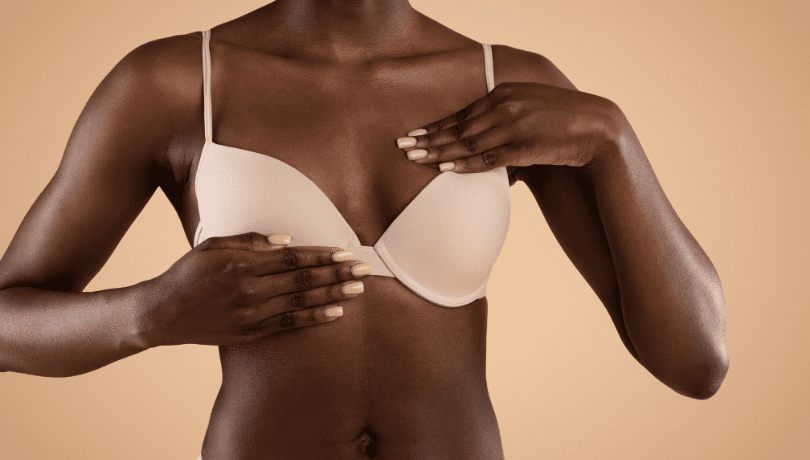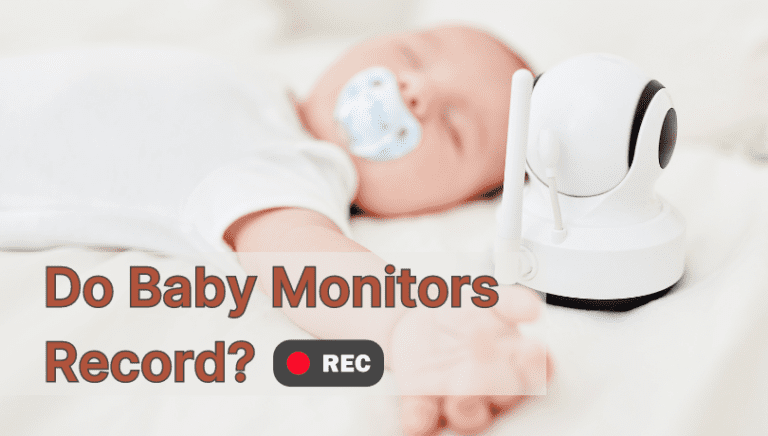Free Bra Size Calculator to Find Your Perfect Fit
I’ve never had it easy with bra sizes. It became tougher to find a good fit after I became a mom. That’s why I spent some time going over bust sizes, band sizes, and how breast size changes during menstrual cycles, pregnancy, and postpartum. So, here’s a comprehensive bra size calculator that can help you get a fit that suits you!
Whether you want a firm or relaxed fit, you can choose for that too. Say goodbye to discomfort forever— let’s find your perfect fit now!

Table of Contents
Bra Size Calculator – How To Measure Your Bra Size
Did you know that nearly 80% of women wear the wrong bra size?
Finding the right bra size can feel like hunting for a needle in a haystack—but we’ve made it easier!
With our handy bra size calculator below, you’ll never have to guess your bra size again!
Bra Size Calculator
For the most accurate results, measure without a bra or shirt on.
❗ Please ensure all measurements are in inches for accurate calculations.
Know Bra Size Charts and International Bra Sizes
A bra size chart is key to figuring out how your measurements translate into the right fit. While our easy bra size calculator does the work for you by using your band and bust measurements, having a chart on hand is super helpful when you’re offline or can’t use a calculator.
Whether you’re shopping online or in-store, these charts help you find the perfect fit every time.
Finding your perfect bra size is easier than you think, and we’re here to help! We’ve broken down how to understand both bra cup size and band size below.

- If you’re between sizes or find your measurements fall in an uncommon range, don’t worry! Knowing how to read bra sizing charts and guides will help you find the most comfortable fit always.
- Different countries use different sizing systems for bras. If you’re shopping internationally, it’s crucial to understand bra size conversion. For instance, UK, US, European, and Australian brands often have slightly different sizing standards.
Fun Fact: Bra sizes vary significantly worldwide. For instance, the average bra size in the US is a 38D, while in Europe, it’s a 34C, and in China, a 34A. - A bra size conversion chart can help you ensure that you’re purchasing the correct size, no matter where you are shopping. Our bra size calculator includes bra size conversion features to make this process easier.
Understanding Bra Size
The bra industry is valued at over $60 billion globally, with black being the most popular color in the US.
With the average woman owning nine bras, many turn to online resources for FAQs on bra sizing and tips on improving posture through better bra fit. The two major aspects of bra size are the band size and the cup size.
1. Band Size (Frame Size)
The band size is the size of the bra band around the torso. However, band sizes come in different measurements in different countries, in that sizes such as small, medium, and large, equate to different measurements.
Refer to the table below for some size measurements, though some variation from the published measurements is possible.
| Band Size | FR/BE/ES | EU (Standard EN 13402) | US and UK | AU, NZ |
| XXS | 75 | 60 | 28 | 6 |
| XS | 80 | 65 | 30 | 8 |
| S | 85 | 70 | 32 | 10 |
| M | 90 | 75 | 34 | 12 |
| L | 95 | 80 | 36 | 14 |
| XL | 100 | 85 | 38 | 16 |
| XXL | 105 | 90 | 40 | 18 |
| 3XL | 110 | 95 | 42 | 20 |
| 4XL | 115 | 100 | 44 | 22 |
| 5XL | 120 | 105 | 46 | 24 |
2. Cup Size
The cup size can be calculated using the difference between bust size and band size.
Refer to the table below.
| Bust/band difference in inches | US cup size | UK/AU cup size |
| <1 | AA | AA |
| 1 | A | A |
| 2 | B | B |
| 3 | C | C |
| 4 | D | D |
| 5 | E or DD | DD |
| 6 | F or DDD | E |
| 7 | G or DDDD | F |
| 8 | H | FF |
| 9 | I | G |
| 10 | J | GG |
| 11 | K | H |
| 12 | L | HH |
| 13 | M | J |
| 14 | N | JJ |
| Bust/band difference in cm | Continental Europe cup size |
| 10-11 | AA |
| 12-13 | A |
| 14-15 | B |
| 16-17 | C |
| 18-19 | D |
| 20-21 | E |
| 22-23 | F |
| 24-25 | G |
| 26-27 | H |
| 28-29 | I |
| 30-31 | J |
| 32-33 | K |
Example:
- Measure your band size (underbust): Let’s say it’s 34 inches.
- Measure your bust size (at the fullest part): Let’s say it’s 38 inches.
- Find the difference between the bust and band size:
38−34 = 4 inches. - Refer to the table for US cup size: A 4-inch difference corresponds to a D cup. In UK/AU sizing, this would also be a D cup.
- For European sizing: Convert the difference to centimeters: 4 inches = 10.16cm. A difference of around 10-11 cm corresponds to an AA cup in Continental Europe sizing.
So there you have it. This is how you calculate the cup size of your breasts.
Why is it Important to Wear the Correct Bra Size?
There was a study that concluded that almost 80% of the women participants wore a bra that was the wrong size, and it also went on to elaborate how education on bra sizing is crucial when it comes to getting an accurate bra size.
It’s shocking how many of us wear the wrong bra size—but don’t worry, we’ve got the tools to fix that!
- Many women are unaware of how cup and band sizes work, and some women are also shocked to learn that the common issues they face with bras are actually solvable (with the right bra size).
- The correct bra size can provide good support for your back and shoulders, and keep your chest and breasts feeling comfortable as you go about your day.
When your bra doesn’t fit quite right, it can be extremely irritating and can cause physical problems and discomfort too.
Here are a few ways to spot an ill-fitting bra, and more importantly, learn how to fix it with the right type of bra.
5 Signs Your Bra Doesn’t Fit – And How to Fix It
1. Inconvenient Underwires
- Problem: When your bra’s shape doesn’t sit well with the shape of your bust or if the underwire is too small, it can cause bruising on the chest, red marks, or constrict your breathing.
- Solution: Choose bras with flexible underwires and pay close attention to the material used. Make sure the underwire is soft and if you do not need that structured support, you can skip the underwire too.

2. Incorrect Cup Fits
- Problem: The cups might be too small, making your breasts spill over and out of the cups OR there may be a gap between the cups and your breasts, making you self-conscious about the fit.
- Solution: Please get a bra where the cups fit without breast overflow or gaps. For bra size fluctuations, make sure you get a bra with removable cups to adjust for the changes.
3. Poor-fitting Bands or Straps
- Problem: When a band or strap is too tight, it can rub or scrape your skin or cause irritation. This problem gets more noticeable if you live in humid or warm regions, causing frequent itching and more. A loose band can also ride up the back, making it uncomfortable.
- Solution: Find bras made with moisture-absorbing materials and breathable bands and straps. Also, measure the chest accurately to get a good band fit.
4. Shoulder and Back Pain
- Problem: When your bra is too tight or loose, your neck and shoulder can start to feel sore, and by the end of the day, you may face back pain too. This is more common for women with larger breasts.
- Solution: The trick is to make sure you distribute your breast weight evenly, so use bras with wider straps and get a snug band fit.
5. Slouching Posture
- Problem: When your bra does not support your frame well, it can make you slouch or hunch, and you may do this quite subconsciously.
- Solution: Pick from full-support bras like racerback bras, T-shirt bras, cross-back bras, shoulder support bras, among more to help maintain a good, strong posture that protects your spine for the long run.
This is where our bra size calculator is practical because not only does it help you measure your bust and chest the right way, but it also helps you narrow down the correct bra size without too much hassle.
Can Breast Sizes Change With Time?
Absolutely!

And not just during pregnancy or breastfeeding. They can change during the menstrual cycle, after weight changes, and more.
- Only the degree to which it changes differs from woman to woman. The most significant increase in breast size happens during pregnancy and breastfeeding, but weight gain can also be a major player.
That’s why it’s so helpful to have bras that can accommodate these changes.
- Subtle fluctuations–like those that happen during the menstrual cycle–can be managed with a bra that has removable or adjustable cups.
- For more noticeable changes, like from pregnancy or significant weight shifts, specialty bras like nursing bras or maternity bras, and expandable straps can help.
Know more about breastfeeding and pumping!
Psst! There are also free online breast weight calculators that can give you a better sense of the size and weight of your breasts, too.
Choose a Bra That Fits Your Needs
- Bras with a flexible or relaxed fit are perfect if you experience noticeable size fluctuations or during breastfeeding. You can choose from wireless or well-fitted underwired bras that won’t pressure your breast tissue or cause clogged milk ducts.
- When your breasts change in size and weight, it can stretch the skin and cause sagging over time. So, go for supportive bras with wide straps, durable bands and fully enclosing cups to make things easier.
- Heavy and full breasts can be back-breaking! I’ve dealt with neck and back pain myself during pregnancy. What helps is to choose a bra with wide and soft straps, a good band, and strong side structures to distribute your breast weight more evenly.
FAQs on Bra Size and Comfort
1. How Do You Know Your Bra Doesn’t Fit?
A poor bra fit will show through your bra’s band, cups, or straps. Here’s how you can check:
Band: If your band rides up the back, your bra is probably too loose. A tight band can cause marks around the ribs and make the area feel uncomfortable.
Cups: Your cup size might be too small if your breasts are spilling out of them, or it’s pinching your skin. And the cup size is too big if you’ve got a gap between the cups and your breasts.
Straps: Tight straps can leave marks and cause you pain. Loose straps are more likely to fall off your shoulders (but thankfully, that’s adjustable).
If you feel any discomfort or pain, don’t hesitate to switch your bra to a slightly bigger size!
2. What Is ABCD in Bra Size?
The alphabets indicate the cup size in your bra. ‘A’ denotes the smallest cup size, and you choose your cup size by measuring the bust and under-bust.
3. How Do Bra Sizes Work?
Bra sizes are a combination of band size (the number) and cup size (the alphabet). In 30B, 30 is the band size and B tells you the cup size.
You measure for cup size at the fullest part of the breast (it’s usually measured close to where the nipple is) and at the under-bust.
You measure for band size below the breasts and around the rib cage. This is usually measured in inches, and it tells you how snugly the bra sits below your breasts.
Concluding Thoughts on Bra Sizes
So many women I know and love have trouble finding the right bra size. That’s when bra size calculators are useful. They help you narrow things down, and then it’s all about finding features that make your bra comfier, like soft straps, a relaxed band, smooth cups, and more.
And dear mothers, don’t forget! Your breasts will get fuller, heavier, and can increase in size during pregnancies and breastfeeding. So, make sure you get bras that can adjust to these changes.
Breast size can also change (by a small amount) during menstrual cycles, weight changes, and other health concerns. So, please keep this in mind while deciding your bra size and choose the best fitting bra for your needs, whether you need a more relaxed fit or a snug one.






